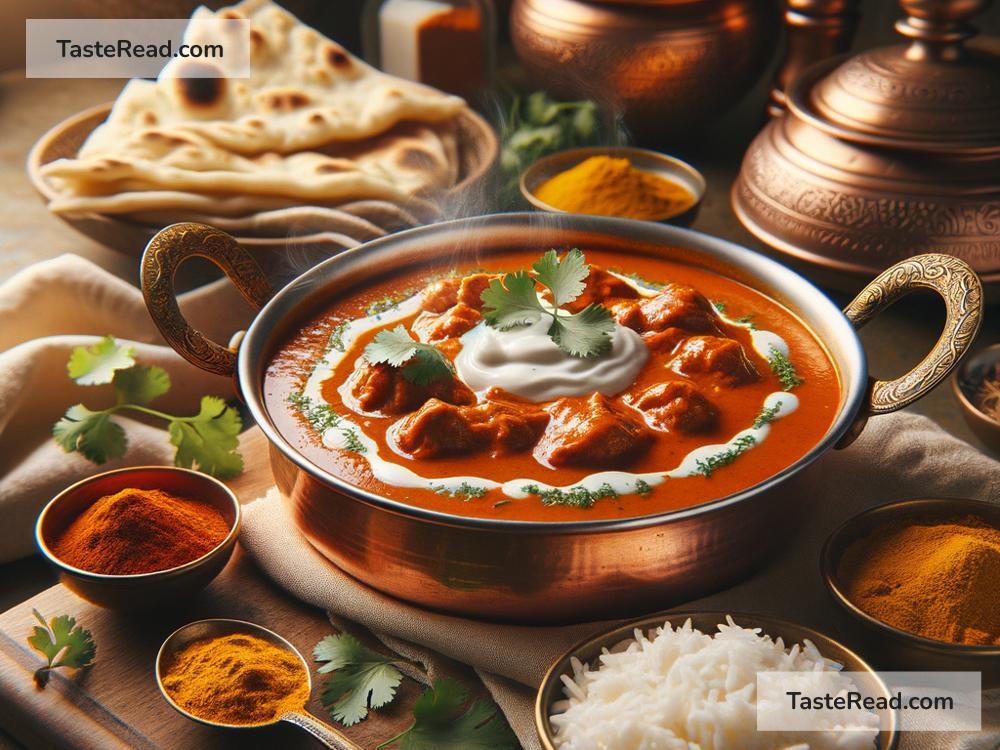The Development of Indian Butter Chicken: A Flavorful Journey
Butter chicken is one of the most famous dishes in Indian cuisine and is loved not just in India but all over the world. Its creamy tomato-based curry, tender chicken pieces, and rich, buttery flavors make it a favorite for food lovers everywhere. But how did this delicious dish come to be? Let’s dive into the fascinating history and development of butter chicken.
The Origin Story
Butter chicken, also known as murgh makhani (which means chicken with butter in Hindi), has an interesting origin that dates back to the 20th century. The dish was first created in the kitchens of the famous Moti Mahal restaurant in Delhi, India, in the 1940s. Kundan Lal Gujral, the owner of the restaurant, is credited as the creator of this iconic dish.
At that time, Gujral was experimenting with various recipes to introduce unique flavors to his customers. It is said that the idea for butter chicken came about almost by accident. The cooks at Moti Mahal wanted to find a creative way to reuse leftover tandoori chicken. Tandoori chicken is a flavorful roasted chicken dish cooked in a clay oven called a tandoor, but it tends to dry out after a while. Instead of discarding the leftovers, the chefs decided to create a sauce to make the chicken moist and flavorful again.
The Creation
The original butter chicken recipe came together using ingredients that were readily available in Indian kitchens. The chefs mixed tomatoes, butter, cream, and various spices like cumin, coriander, turmeric, and garam masala to create a rich, smooth curry. The leftover tandoori chicken was added to this creamy tomato sauce, resulting in a dish that was both flavorful and comforting.
The innovative recipe was an instant hit among the customers at Moti Mahal. Its unique taste and luxurious texture made it stand out from traditional Indian curries. Soon, butter chicken became a signature dish of the restaurant and started gaining popularity across Delhi and beyond.
The Rise to Fame
Butter chicken’s fame grew steadily over the years, especially with the rise of Indian restaurants around the world. Its flavors appealed to people from different cultures and backgrounds, making it an international favorite. One reason for its widespread appeal is that butter chicken strikes a perfect balance between spices and creaminess, making it less intense than some other Indian dishes. This makes it an excellent introduction to Indian cuisine for those unfamiliar with the bold flavors of the region.
Even within India, butter chicken holds a special place as a “comfort food.” Whether served with naan (a type of Indian bread) or steamed basmati rice, butter chicken is a dish that brings joy and satisfaction to millions.
How Butter Chicken Evolved
As butter chicken grew in popularity, it started evolving as chefs experimented and adapted the dish according to local tastes and ingredients. In traditional recipes, tandoori chicken is cooked in a tandoor before being combined with the curry. However, many home cooks and restaurants began skipping the tandoor step and relied on stovetop cooking methods instead. This made the dish much easier to prepare.
In other parts of the world, butter chicken was adapted further. For example, in Western countries, the dish is often modified to be less spicy and milder. Some recipes even introduce new ingredients like coconut milk instead of cream to create variations in flavor.
Butter chicken also paved the way for similar dishes to emerge, such as chicken tikka masala, which shares many similarities but features a slightly different flavor profile.
Modern-Day Butter Chicken
Today, butter chicken is a global sensation. It’s one of the most searched Indian recipes online and is featured on menus in countless restaurants worldwide. In India, butter chicken remains a household favorite, often cooked during special occasions or family dinners.
The ease of preparation and versatility of the dish contributes to its popularity. Whether you’re a professional chef or someone cooking at home for the first time, butter chicken can be made with basic ingredients and still delivers exceptional flavor.
With the rise of vegetarianism and veganism, some cooks even create vegetarian versions of butter chicken using paneer (Indian cottage cheese) or tofu as substitutes for chicken. This ensures that the dish continues to evolve and is accessible to more people.
Conclusion
Butter chicken is more than just a dish; it’s a celebration of Indian culinary creativity and adaptability. Born out of an effort to save leftover tandoori chicken, it grew into an international favorite loved for its rich flavors and creamy texture. Thanks to the vision of the chefs at Moti Mahal, butter chicken is now a symbol of India’s ability to innovate and share its culture with the world.
The development of butter chicken shows how simple ideas can lead to extraordinary results, bringing people together through the universal love of food. Next time you enjoy butter chicken at a restaurant or cook it at home, remember the fascinating journey it has taken to reach your plate.


